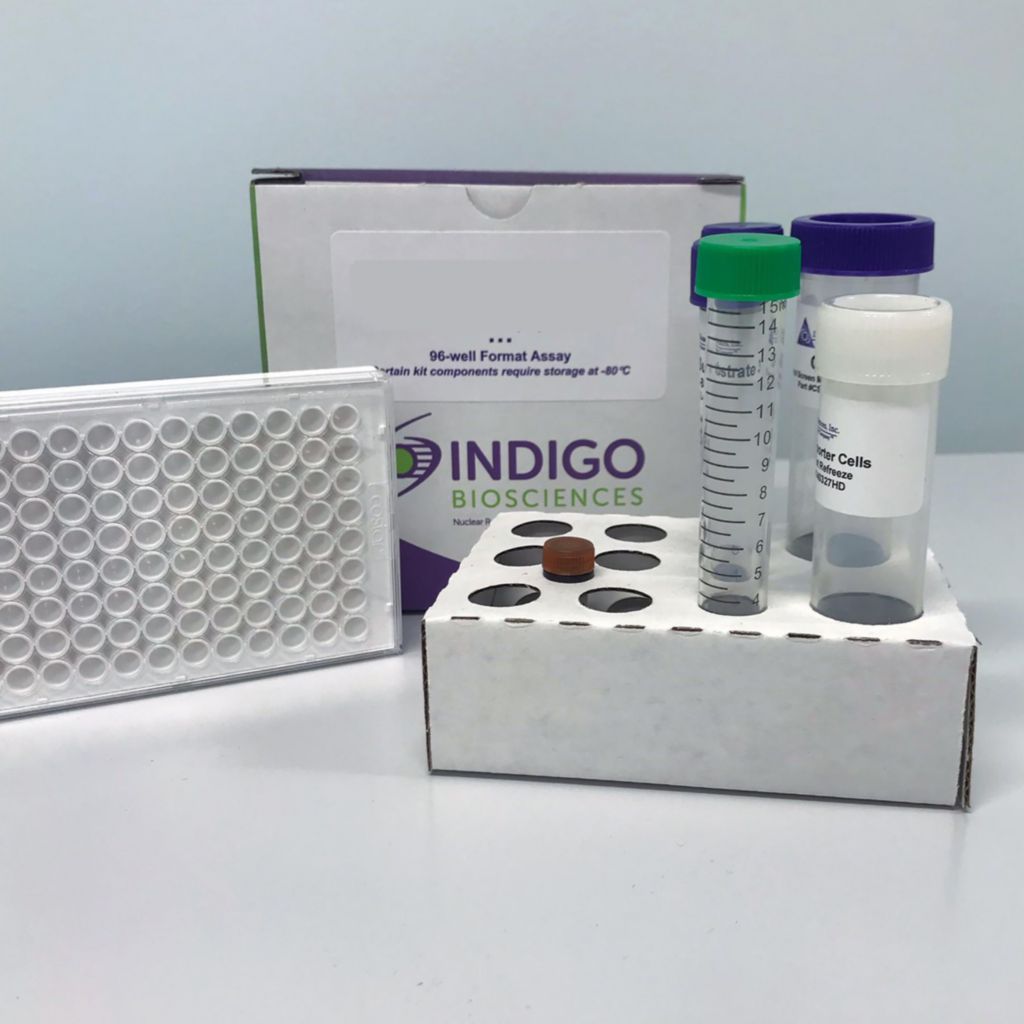Product Description and Product Data
This is an all-inclusive cell-based luciferase reporter assay kit targeting the Mouse RAR-related Orphan Receptor gamma (mRORg). INDIGO’s mRORg reporter assay utilizes proprietary mammalian cells that have been engineered to provide constitutive expression of the mRORg. In addition to mRORg Reporter Cells, this kit provides two optimized media for use during cell culture and in diluting the user’s test samples, a reference agonist, Luciferase Detection Reagent, and a cell culture-ready assay plate. The principal application of this assay is in the screening of test samples to quantify any functional activity, either agonist or antagonist, that they may exert against mRORg. This kit provides researchers with clear, reproducible results, exceptional cell viability post-thaw, and consistent results lot to lot. Kits must be stored at -80C. Do not store in liquid nitrogen. Note: reporter cells cannot be refrozen or maintained in extended culture.
Features
Clear, Reproducible Results
- All-Inclusive Assay Systems
- Exceptional Cell Viability Post-Thaw
- Consistent Results Lot to Lot
Product Specifications
| Target Type | Nuclear Hormone Receptor, Nuclear Receptor Orthologs | ||
| Species | Mouse | ||
| Receptor Form | Hybrid | ||
| Assay Mode | Inverse Agonist | ||
| Kit Components |
| ||
| Shelf Life | 6 months | ||
| Shipping Requirements | Dry Ice | ||
| Storage temperature | -80C |
Data
Target Background
RAR-related orphan receptor gamma (ROR-gamma), also known as NR1F3 (nuclear receptor subfamily 1, group F, member 3) is a nuclear receptor encoded by the RORG gene. The RAR-related orphan receptors (RORs) are members of the nuclear receptor family of intracellular transcription factors. There are three forms of ROR, ROR-α, -β, and -γ and each is encoded by a separate gene (RORA, RORB, and RORC respectively). The RORs are somewhat unusual in that they appear to bind as monomers to hormone response elements as opposed to the majority of other nuclear receptors which bind as dimers. Melatonin has been reported to be the endogenous ligand for ROR-α while CGP 52608 has been identified as a ROR-α selective synthetic ligand. However X-ray crystallographic (PDB 1n83 and 1s0x) and functional data both suggest that cholesterol or a cholesterol derivative may be the endogenous ligand. In contrast, all-trans retinoic acid binds with high affinity to ROR-β and -γ but not ROR-α.
INDIGO’s Mouse RORγ (RAR-related Orphan Receptor Gamma; nr1f3) referred to as mouse rorC, or here as mRORγ. The N-terminal DNA binding domain (DBD) of the native mRORγ receptor has been substituted with that of the yeast GAL4-DBD. The principle application of this reporter assay is in the screening of test samples to quantify inverse-agonist or agonist activities that they may exert against mouse RORγ.
Also available as a service

